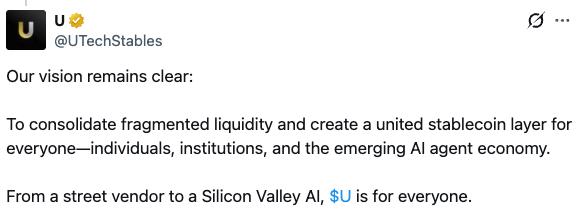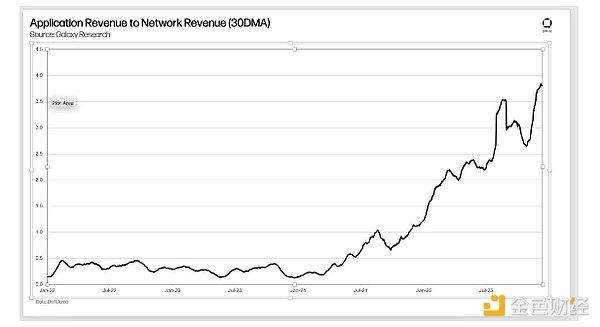Author: Suzanne Woolley, Bloomberg Businessweek
Compiled by: Luffy, Foresight News
This year is full of uncertainties. The artificial intelligence narrative that once drove the US stock market is being questioned; how the second Trump administration will affect the financial situation of ordinary Americans, and whether we will see inflation rise again, putting pressure on stocks and bonds, is still largely undecided. To help guide investors through this uncertain period, we consulted investment experts on some of the major issues facing investors this year. While this year is full of risks, the right strategies may also bring returns.

1. How likely is a significant drop in the S&P 500 index this year? How should I prepare?
Michael Cembalest, chairman of market and investment strategy at JPMorgan Asset Management, says the S&P 500 has risen more than 20% each of the past two years, a feat that has occurred only 10 times since 1871. Cembalest expects the stock market to rise by the end of this year, but he also says a decline of up to 15% is possible, which he notes is not uncommon. In the past 100 years, the S&P 500 has fallen 10% or more in 60 years.
Given the potential for market volatility, a better question is: when do you need this money? The market always reaches new highs after each decline, so if you can wait a few years to cash out, you won't run into problems. Also, carefully examine your asset allocation. Holding just the S&P 500 index is not enough, as the top 10 stocks (mostly tech) now account for about two-fifths of the index's market value, up from about a quarter in 2000.
Ben Inker, co-head of asset allocation at GMO, says one diversified approach is to buy an equal-weighted ETF that tracks the index, where each company makes up about 0.2% of the value. "Over the long run, this is a decent way to avoid getting too caught up in any current investment fad," he says.
2. Does the traditional 60/40 portfolio still make sense?
Financial planners have long recommended a 60% stock, 40% bond portfolio, which has provided decent returns with much lower risk than holding stocks alone over the past few decades. However, the logic behind this portfolio (that bonds rise when stocks fall, and vice versa) completely broke down in 2022 as inflation soared and the Fed aggressively raised rates, battering both stocks and bonds. Lately, US stocks and bonds have often moved in tandem.
More and more investment managers are suggesting allocating a portion of the 60/40 portfolio to so-called alternative assets - private securities that don't move in lockstep with public market assets. Adding these assets may introduce new risks, but could also boost long-term returns. Sinead Colton Grant, chief investment officer at BNY Mellon Wealth Management, says companies are going public later, meaning public market investors miss out on the higher returns in the earlier stages. "If you don't have access to private equity or venture capital, you're missing out." She thinks private securities should make up about a quarter of the portfolio to replicate the performance of the 60/40 mix from the late 1990s.
Not everyone agrees. Jason Kephart, director of multi-asset ratings at Morningstar, says adding private assets to a 60/40 portfolio "adds complexity and fees, and there are also some questions around the valuation methodology." He says the beauty of the 60/40 strategy is its simplicity, making it "easier for investors to understand and stick with over the long term."
3. If I'm risk-averse, is US Treasuries worth investing in? Will the bond vigilantes return?
Bond vigilantes are large investors who demand higher yields on government debt to express their displeasure with excessive government spending. While the details of the new administration's spending plans are still unclear, there are concerns that the US budget deficit could worsen in the coming years, potentially meaning higher Treasury yields are on the way.
The 10-year Treasury yield is currently around 4.6%, near an 18-year high. Should investors seize this opportunity? Leslie Falconio, head of taxable fixed income strategy at UBS Global Wealth Management, says the firm had been favoring locking in 5-year Treasury yields until recently. But with UBS forecasting economic growth to remain above trend but slow, and inflation to decline, she thinks the 10-year yield around 4.8% to 5% could be a good buying opportunity. As for 30-year Treasuries, she says, "Given the current volatility and policy uncertainty, we don't think it's wise to extend out to 30 years at these yield levels - the risk/reward is not compelling."
Of course, for those with high-yield savings accounts or 1-year CDs, a 4.6% yield may not look that high, as those products can offer similar returns. But savings account rates can change at any time, and with CDs, you can't be sure you'll get the same rate when you renew in a year.
4. How can I protect my assets from rising prices?
President Trump promised to "defeat inflation," but at the same time, he is pushing for higher tariffs and tax cuts, which could exacerbate inflation. Amy Arnott, portfolio strategist at Morningstar, says for investors in their 20s and 30s, rising prices may not be the main concern, as wages should keep up with inflation over time, and stock values generally grow faster than inflation. "Stocks are one of the best long-term hedges against inflation," Arnott says.
Those hoping to retire in the next 10 years may want to consider dedicated inflation-hedging tools like commodities. Arnott says a diversified commodities fund might include oil, natural gas, copper, gold, silver, wheat, and soybeans. These funds have generally performed poorly lately, so Arnott suggests comparing the risk-adjusted returns of such investments, rather than focusing on absolute performance.
For retirees or those planning to retire soon (who can't offset inflation with pay raises), Arnott recommends buying Treasury Inflation-Protected Securities (TIPS) linked to the Consumer Price Index. She suggests 5-year and 10-year TIPS, rather than 30-year, as the longer-term bonds carry too much risk for those not planning to hold to maturity.
5. Should I add cryptocurrencies to my portfolio?
With a president who has launched a Memecoin and a Treasury Secretary (Scott Bessent) disclosing (and selling) his crypto fund holdings, cryptocurrencies seem to be going more mainstream. Investors can now buy crypto ETFs, and billions of dollars have flowed into the year-old iShares Bitcoin Trust (IBIT), helping drive Bitcoin up nearly 60% in the six weeks after the election.
However, the long-term prospects for cryptocurrencies remain highly uncertain; for example, Bitcoin has recently pulled back. As a result, some advisors suggest investors who insist on adding crypto should limit the position to under 5% of their portfolio; for those nearing retirement, the allocation should be even lower. Matt Maley, chief market strategist at Miller Tabak + Co., says younger investors can allocate a bit more to crypto, but only if they balance the risk by investing "in companies with good cash flow and stability." "You don't want to be 10% in Bitcoin and 90% in tech stocks."
6. Has the AI bubble burst?
The two-year bull market in AI stocks suffered a major setback in January this year, as the chatbot developed by the startup DeepSeek forced investors to rethink some basic assumptions. DeepSeek said it was unable to obtain the most advanced semiconductors and instead used lower-cost chips to quickly develop a model that seemed to rival the models of US AI leaders in some metrics. On January 27, Nvidia, the company leading advanced AI chips, saw its stock price plummet 17%, wiping $589 billion off its market value, the largest single-day drop in US stock market history.
The possibility that AI may not require expensive chips has raised questions about the valuations of Nvidia and US AI giants. Analysts are closely studying DeepSeek's model, trying to verify its claims and assess whether the US AI frenzy has peaked. It is certain that China's progress in this technology has been faster than many had imagined. Some investment managers see a glimmer of hope in DeepSeek, as if more companies and consumers can afford the technology, AI may have a greater impact. However, the high valuations of leading tech stocks have made some portfolio managers cautious about investing new capital, instead favoring undervalued areas of the US market such as healthcare and consumer goods, or seeking better opportunities abroad.
7. How much will climate change impact my retirement plan?
Very much. For the vast majority of retirees, home equity is the most valuable asset they hold, especially if they have lived in their homes for decades and paid off their mortgages. Fully owning one's home can provide security for housing costs and avoid the uncertainty of future rent increases. But as the number of extreme weather events increases, the rising cost of home insurance seems to undermine this logic.
According to a study of more than 47 million households, home insurance premiums rose an inflation-adjusted 13% on average between 2020 and 2023. But many major insurers are no longer offering new home insurance policies in high-risk areas, or only providing limited coverage - especially in sunny coastal communities where many Americans spend their retirement. For example, in 2021, about 13% of voluntary home and fire insurance policies in California were not renewed.
Clearly, more and more elderly people feel they have no choice but to forgo insurance due to lack of cash. According to data from the Insurance Information Institute, the proportion of Americans without home insurance has more than doubled since 2019, reaching 12%. "This puts retirees in a bind," said Daryl Fairweather, chief economist at real estate brokerage Redfin, "either they have to bear the high and potentially rapidly rising monthly premiums, or risk losing their homes."
8. Will housing become more affordable in the near term?
The current 30-year fixed mortgage rate is around 7%, which has priced many buyers out of the loan market. And existing homeowners holding mortgages with rates of 3% or 4% have little incentive to sell, as it would mean getting a new mortgage at today's rates. Moody's Analytics chief economist Mark Zandi says mortgage rates are unlikely to fall back to around 6% anytime soon, as the Trump administration is pursuing a series of policies that could lead to inflation.
The vacancy rate for lower-priced homes (under $400,000) is around 1%, near a historic low. This suggests that both home sales and rental markets will continue to see high prices. Don't expect new construction to meet demand, as immigrants (those facing deportation risks under the Trump administration) account for nearly a third of construction workers, about half of whom are undocumented. Zandi says, "Housing will remain unaffordable this year and the foreseeable future."







